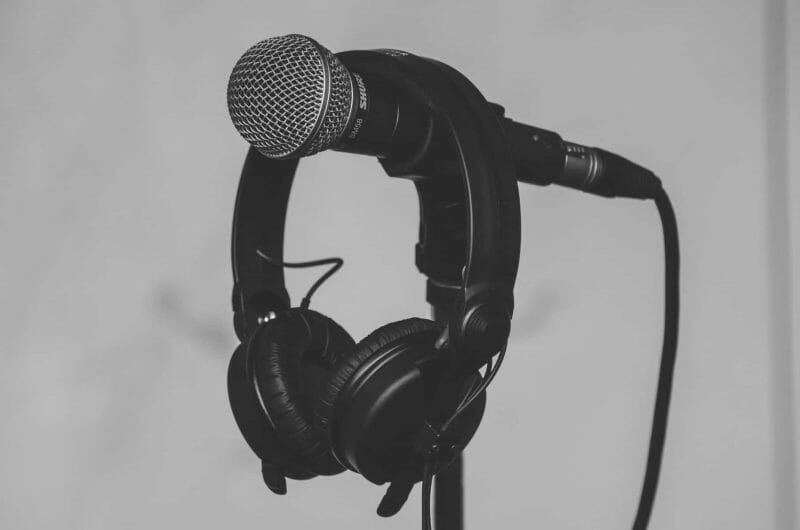It’s not easy deciding what equipment to purchase.
You can spend hours trawling forums and reviews online – but find yourself going round in circles.
One of your first purchases should be a good condenser microphone. In fact, for most people, it will be the first.
(On a side note, I recommend having at least one large diaphragm condenser and one dynamic microphone as a starting point).
I guess this explains why so many people ask me what my favorite affordable condenser microphone is.
I have been using the sE Electronics 2200a for years. It’s by far my favorite affordable large diaphragm condenser.
I use this almost every day for recording my own voice, and find myself using it in the majority of vocal sessions.
I’m guessing you’re here because you want to make your mixes sound professional. Well, you don’t need expensive gear or software to do that – you just need the right knowledge. We put together a brief training that covers a totally new approach to music production. Until now, everyone has been teaching production totally backward. Just click below to watch. Get industry-quality every time (steal this framework)
But if you just want to learn about the SE2200a specifically, keep reading.
Compared to the competition in this price range, the sE2200a sounds smoother and more expensive. The slight bump at 10kHz adds a nice airiness to vocals and helps them cut through the mix.
They are extremely well built, and each microphone capsule is crafted by hand.
The bundled shockmount and pop filter are also great additions, and this will save you quite a bit of money. After all, these items are pretty much essential.
I’m a big fan of these mics on most instruments, but especially on vocals.
Video Review
About the sE2200a II
This is a large diaphragm condenser microphone, which makes it perfect for vocals, acoustic guitars and a range of other uses. But perhaps the key use case here is vocals.
Remember that as a condenser microphone, it will require phantom power to work.
The model that I have used the most is the cardioid model. This is the perfect polar pattern for use in a home studio. It rejects sound from the rear, so is more suited to a less-than-ideal environment like a living room or bedroom.
There is also a multi-pattern option, which is highly affordable. In fact, I think it’s the most affordable multi pattern microphone on the market that’s actually usable.
With the multi pattern microphone, you get cardioid, omnidirectional and figure-8 patterns. This is extremely useful for recording vocals. Switching to omnidirectional will give quite a different tone and reduce fluctuations from movement – perfect for vocalists that like to move around. The figure-8 pattern has its uses too.
In a home studio you will probably need to use some treatment when using the microphone in omnidirectional mode, but this shouldn’t cause too much of a problem.
Both the cardioid version (2200a II C) and the multi pattern version (2200a II) have a high-pass filter switch at 60Hz and a pad switch.
The high-pass is extremely useful and I pretty much leave it turn on all the time. The pad is also great if you want to use one of these on a louder source, such as a drum kit.
One thing to note is that the cardioid and multi pattern microphones do have a slightly different frequency response.
The cardioid microphone has a slight bump between 3-6kHz as well as a larger bump at 10-15kHz.
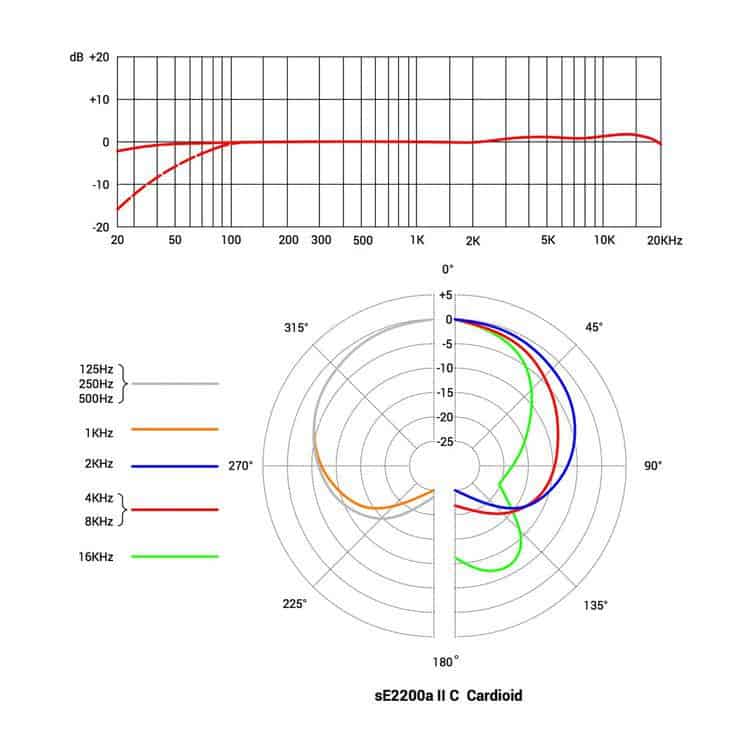
The multi pattern microphone, when set to cardioid, lacks this bump in the upper midrange (3-6Khz), so sounds a touch warmer but might need more additive EQ to help the vocalist to cut through.
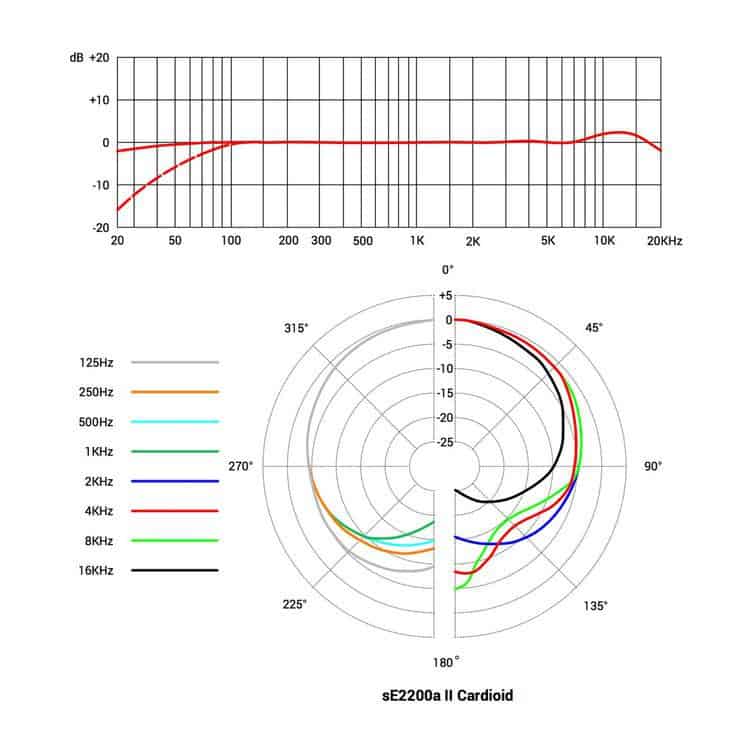
Interestingly, in omnidirectional mode, the multi pattern version has a dip in the upper mids around 5kHz. This could be extremely useful in some cases.
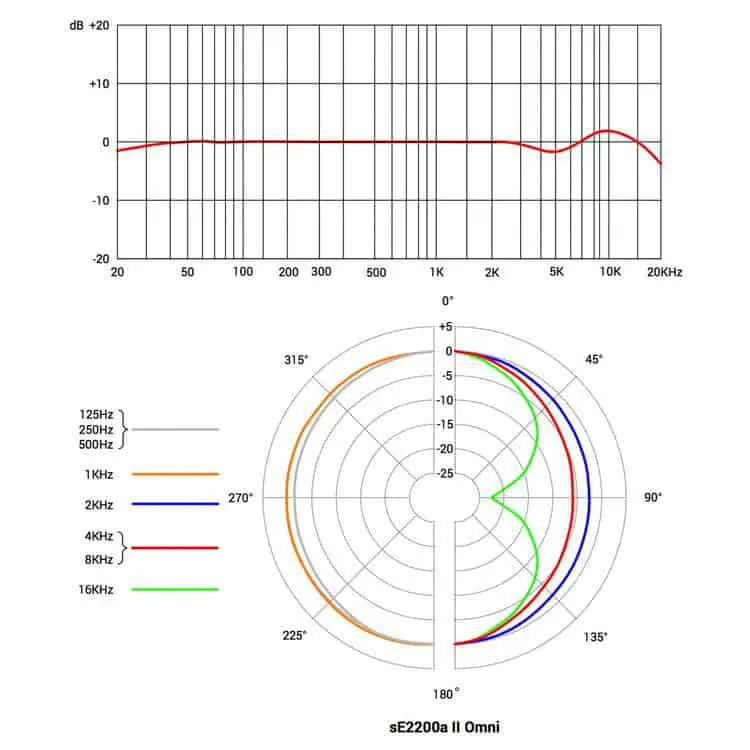
In figure-8 mode, the multi pattern version has a significant boost in the upper mids from 2-7kHz, and a dip in the highs from 15kHz upwards. Again, this would be very useful in some cases where the vocal really needs to cut through, or to enhance a deep male vocalist.
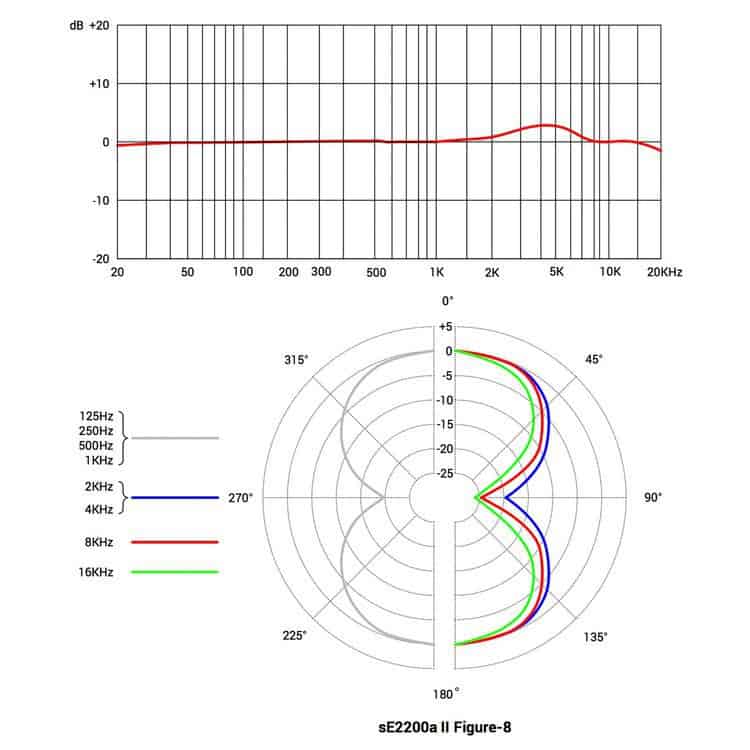
As you can see, the multi pattern provides more tonal options, but the cardioid version has that nice boost in the upper mids that works well in dense mixes.
Tone and Comparisons
Compared to the competition in this price range, the sE2200a excels.
I have made a direct comparison to both the Rode NT1A and the Audio-Technia AT2035.
I find that the Rode NT1A often sounds too bright on most vocalists, bordering on harsh. The exaggerated top end compliments some vocalists, but in most cases I find that it’s too hyped and can enhance sibilance. To be clear, it’s not the kind of silky exaggerated top-end that you would expect from a more expensive microphone.
The AT2035 doesn’t suffer from the same top-end problems as the NT1A, and has a warmer, analogue character of sound. Although a great microphone in it’s own right, I find that the 2200a has more clarity that helps the vocal to cut through a mix.
In general, the 2200a has a slightly warmer tone, and more clarity in the top end thanks to the slight bump at 10kHz.
Conclusion
In some cases, a different microphone might suit your voice or the vocalist. The best thing you can do is to try out several microphones.
But if you have a limited budget and can only afford one condenser microphone, I highly recommend the sE2200a II.
Before you head out, make sure to grab my free Vocal Recording Handbook. It’ll show you some of the best ways to get a pro sound when recording vocals at home.
Use it to take your vocals from demo to pro!
If you want to dig deeper into music production and learn what it actually takes to make mixes that sound pro… And you’re an intermediate or advanced producer… Be sure to check out the free masterclass: Enjoy!Next Steps

